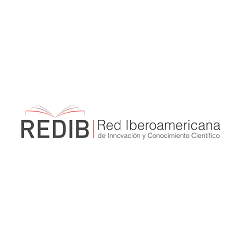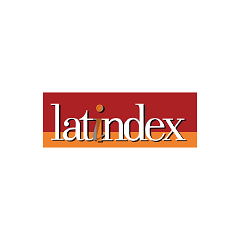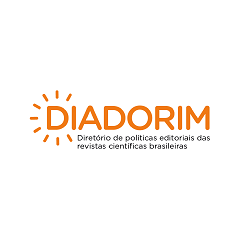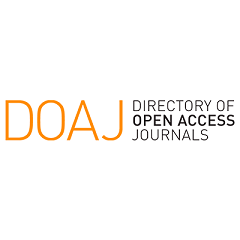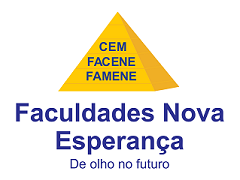PERFIL SOCIODEMOGRÁFICO E CLÍNICO DE FAMÍLIAS E INDIVÍDUOS COM TRANSTORNO DO ESPECTRO AUTISTA
Sociodemographic and clinical profile of families and individuals with autism spectrum disorder
DOI:
https://doi.org/10.17695/rcsne.vol22.n1.p34-54Palavras-chave:
Formulário, Transtorno Autístico, Transtorno do Espectro Autista, Saúde Coletiva, Perfil de saúdeResumo
O Transtorno do Espectro Autista (TEA) impõe limitações para o indivíduo e família, sendo necessário conhecer ambas as realidades e traçar intervenções efetivas. Portanto, este estudo teve como objetivo realizar um levantamento de dados sociodemográficos e clínicos de famílias e indivíduos com TEA em Mossoró-RN. Caracterizou-se por ser um estudo descritivo, transversal e quantitativo, por meio de uma busca ativa nas redes sociais e utilizando o Google forms. A população alvo foram as famílias que tem indivíduos com diagnóstico de TEA e residentes em Mossoró- RN. Foram excluídas as pessoas que possuíam algum outro diagnóstico que causasse perturbação no neurodesenvolvimento. A amostra foi por conveniência, totalizando 35 indivíduos. Daqueles com TEA, 80% eram do sexo masculino; com idade entre 2 e 19 anos, as raças predominantes foram branca e parda (45,7%). O profissional mais presente no diagnóstico foi o neuropediatra (71,4%); e o sentimento mais presente neste momento foi o medo (34,3%). O diagnóstico foi recebido de maneira tardia pela maioria (42,9%), e 25,7% se sentiram satisfeitos por ter recebido. Sobre o acompanhamento de profissionais de saúde, a maioria relatou ter (97,1%); porém minimamente esse acompanhamento se dá pelo SUS (20%). As dificuldades mais citadas no dia a dia foram as de restrição alimentar (65,7%) e comunicação (62,9%). No que se refere aos dados dos cuidadores, houve prevalência do sexo feminino (97,1%); com variação de idade de 23 a 53 anos, casados (65,7%), nível médio de escolaridade (40%) e que não trabalha (54,3%), com renda mensal de um salário mínimo (40%). A zona urbana prevaleceu como moradia (97,1%). Os resultados obtidos nesta pesquisa apontam para novos dados que não estão disponibilizados na literatura; evidenciando a necessidade de se conhecer a realidade destes indivíduos, seu contexto, bem como focar em levantamentos de questões de cuidados e assistência necessários para esta população.
Downloads
Publicado
Como Citar
Edição
Seção
Licença
Copyright (c) 2024 Revista de Ciências da Saúde Nova Esperança

Este trabalho está licenciado sob uma licença Creative Commons Attribution-NonCommercial 4.0 International License.
-
Declaro minha participação efetiva na elaboração do trabalho acima intitulado e torno pública minha responsabilidade por seu conteúdo. Certifico que o manuscrito representa um trabalho original e que nem este ou qualquer outro trabalho de minha autoria, em parte ou na íntegra, com conteúdo substancialmente similar, foi publicado ou enviado a outra revista, seja no formato impresso ou eletrônico; e que todos os procedimentos éticos foram tomados objetivando sua publicação.
Adicionalmente,
- Declaro que, em caso de aceitação do artigo, a Revista de Ciências da Saúde Nova Esperança, ISSN 2317-7160 passará a ter os direitos autorais a ele referentes, incluindo modificações para o melhor entendimento do conteúdo, que se tornará propriedade exclusiva da Revista, sendo liberada a reprodução total ou parcial em qualquer outro meio de divulgação, impresso ou eletrônico, desde que citada a fonte, conferindo os devidos créditos à Revista de Ciências da Saúde Nova Esperança.
- Declaro que não houve plágio e tenho conhecimento que o plágio representa um crime previsto no artigo 184 do Código Penal.
- Declaro, como autor responsável pela submissão, que nem eu e nenhum um dos autores que compõe a autoria desse manuscrito possuímos conflito (s) de interesse (s) relacionado (s) ao artigo. Que seja de natureza pessoal, comercial, política, acadêmica ou financeira.
Estou ciente que se for detectado a falsidade das declarações acima, o artigo será considerado nulo, podendo a informação de cancelamento ser de conhecimento público.







